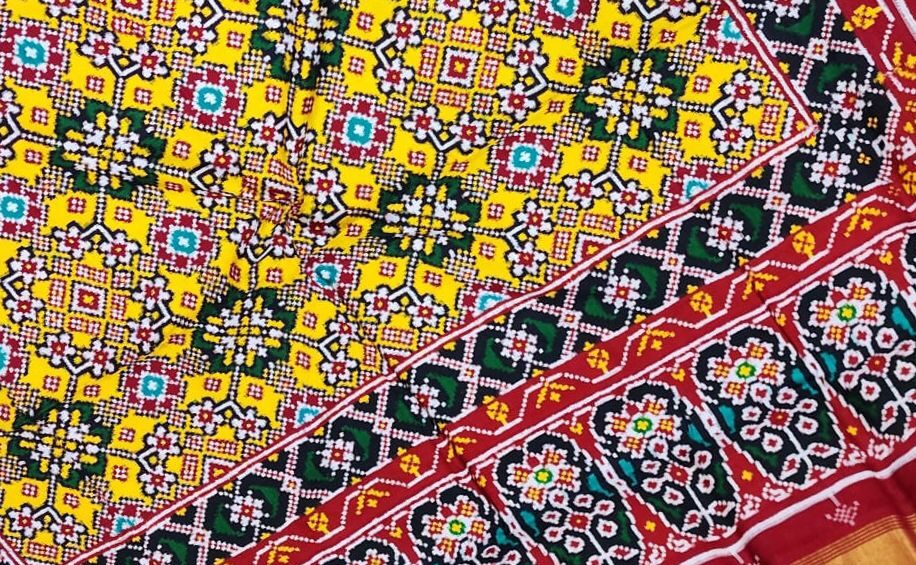In the world of Indian fashion, few garments command as much admiration and reverence as the timeless Patan Ka Patola saree. Renowned for their intricate designs, exquisite craftsmanship, and cultural significance, these sarees have captivated hearts for centuries. Among the various iterations of Patola sarees, the Double Patan Ka Patola saree stands out as a unique and luxurious choice, blending tradition with innovation to create a masterpiece of elegance and sophistication.
Unraveling the Mystery: What is a Double Patan Ka Patola Saree?
A Double Patan Ka Patola saree is a marvel of textile artistry, crafted using a distinctive double ikat weaving technique. Unlike traditional single ikat Patola sarees, where either the warp or weft threads are dyed before weaving, double ikat involves dyeing both the warp and weft threads before weaving, resulting in intricate patterns on both sides of the fabric. This meticulous process requires immense skill and precision, with each saree taking months, if not years, to complete.
Why Choose Double Patan Ka Patola Saree?
Exceptional Craftsmanship:
Double Patan Ka Patola sarees epitomize the pinnacle of craftsmanship, showcasing the unparalleled skill and artistry of master weavers. The symmetrical patterns on both sides of the saree testify to the meticulous attention to detail and precision required to create these masterpieces.
Timeless Elegance:
Just like their single ikat counterparts, Double Patan Ka Patola sarees exude timeless elegance and sophistication. Whether draped for a wedding, festive occasion, or cultural event, these sarees make a striking statement, effortlessly blending tradition with contemporary style.
Versatility:
Despite their intricate designs, Double Patan Ka Patola sarees are surprisingly versatile, suitable for a wide range of occasions. Whether paired with traditional jewelry for a formal event or dressed down with minimalist accessories for a casual outing, these sarees exude charm and grace in any setting.
Investment in Heritage:
By investing in a Double Patan Ka Patola saree, you not only acquire a luxurious piece of attire but also contribute to the preservation of a rich cultural heritage. Each saree is a testament to centuries-old traditions and the enduring legacy of Indian textile artistry.
Exclusivity:
Due to the labor-intensive nature of their creation, Double Patan Ka Patola sarees are relatively rare and exclusive. Owning one of these sarees is not just a fashion statement but also a symbol of discerning taste and appreciation for fine craftsmanship.
In Conclusion:
Double Patan Ka Patola sarees represent the epitome of luxury, elegance, and heritage. With their intricate patterns, exceptional craftsmanship, and timeless appeal, these sarees are more than just garments; they are works of art that embody the essence of Indian culture and tradition. For those seeking to make a statement and invest in a piece of timeless beauty, a Double Patan Ka Patola saree is a choice that promises to enchant and delight for generations to come.












